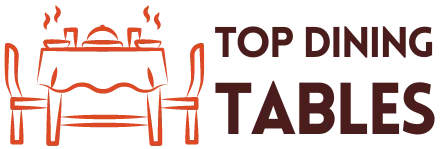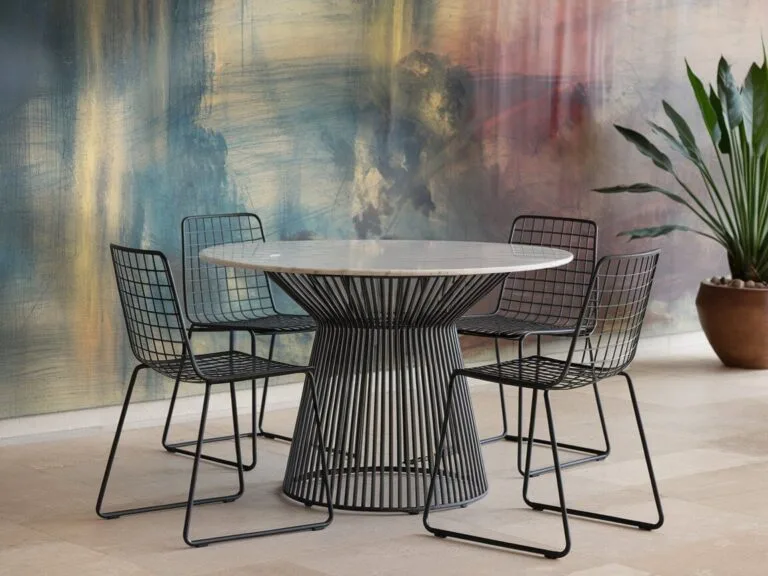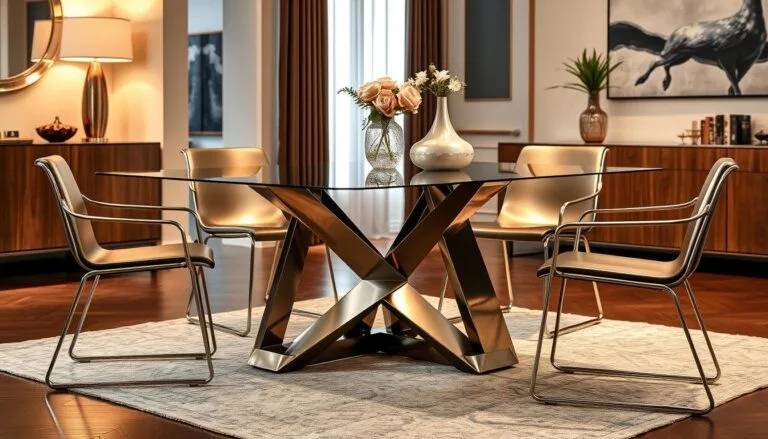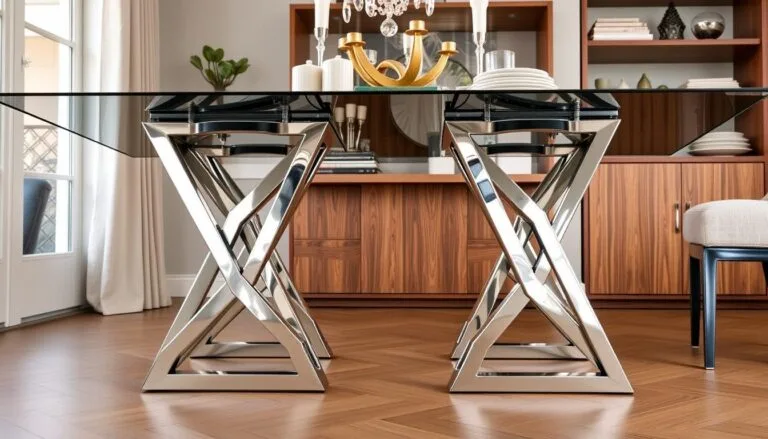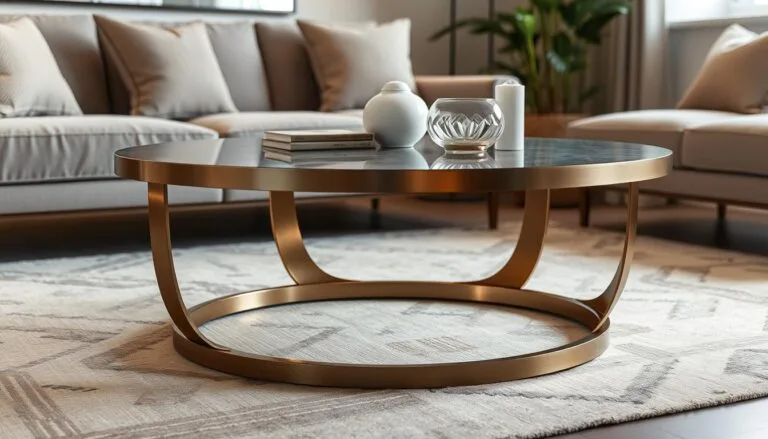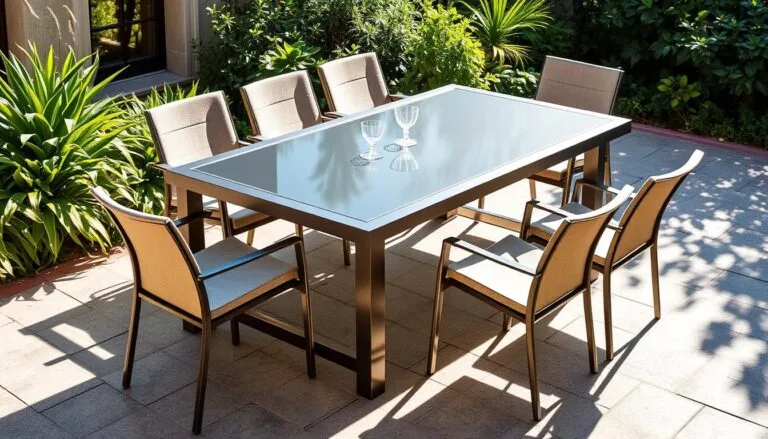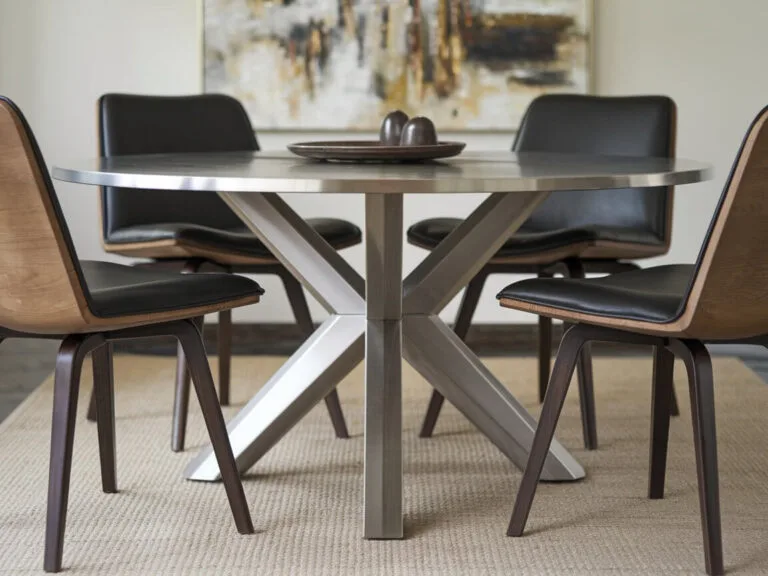How to Care for Your Metal Dining Table: Tips & Tricks
How to care for your metal dining table properly is essential for maintaining its beauty, durability, and functionality over time. A metal dining table serves as more than just furniture—it’s a centerpiece that brings together family and friends while adding industrial elegance to your dining space. Whether you own a stainless steel, wrought iron, or aluminum dining table, understanding the proper care techniques will ensure your investment lasts for decades.
Metal dining tables have gained popularity for their sleek appearance, durability, and versatility. However, without proper maintenance, even the highest-quality metal furniture can lose its luster, develop rust, or suffer from surface damage. This comprehensive guide will walk you through everything you need to know about how to care for your metal dining table, from daily maintenance to deep cleaning techniques.
Table of Contents
Understanding Your Metal Dining Table
Before diving into care instructions, it’s important to identify the type of metal your dining table is made from. Different metals require specific care approaches:
- Stainless Steel Tables: Resistant to rust and stains but prone to water spots and fingerprints
- Wrought Iron Tables: Durable but susceptible to rust if not properly maintained
- Aluminum Tables: Lightweight and corrosion-resistant but can develop oxidation
- Powder-Coated Metal Tables: Protected by a coating that requires gentle care to prevent chipping
- CONTEMPORARY DINING TABLE: Dark, sleek and totally handsome. It’s simply a treat for the eyes. This dining room table is…
- RECTANGULAR SHAPE: Dinner table is made of veneers, wood and engineered wood with sharp, tapered legs

Daily Care: How to Care for Your Metal Dining Table
Essential Cleaning Practices
Use Mild Detergents for Regular Cleaning
When learning how to care for your metal dining table, start with the basics. Use a mild detergent mixed with warm water for regular cleaning. Harsh chemicals, bleach, or abrasive cleaners can damage the metal’s finish and create permanent discoloration. Mix a few drops of dish soap with warm water, and use a soft microfiber cloth or non-abrasive sponge to gently clean the surface.
Proper Drying Techniques
After cleaning, thorough drying is crucial in how to care for your metal dining table. Water left on metal surfaces can cause water spots, mineral deposits, or even rust formation. Use a clean, dry cloth to wipe away all moisture, paying special attention to seams, joints, and decorative elements where water tends to accumulate.
Weekly Deep Cleaning
For a more thorough cleaning routine, create a solution of warm water and white vinegar (1:1 ratio) to remove stubborn stains and restore shine. This natural cleaning method is safe for most metal finishes and helps eliminate water spots and mineral buildup.
Preventing Damage: Advanced Metal Table Care
Scratch Prevention Strategies
Protective Accessories Are Essential
Understanding how to care for your metal dining table includes preventing damage before it occurs. Invest in high-quality placemats, table runners, and coasters to create a barrier between dishes and the metal surface. Choose materials like cork, leather, or thick fabric that provide cushioning without scratching.
Handle Sharp Objects Carefully
Never place knives, serving utensils, or other sharp objects directly on your metal table. Always use cutting boards, trivets, or protective pads. Even small scratches can compromise the table’s finish and create entry points for corrosion.
Temperature Protection
Metal conducts heat efficiently, which means hot dishes can damage the surface or cause discoloration. Always use trivets, hot pads, or heat-resistant mats under hot cookware, serving dishes, or appliances.
- Modern Design: This round dining table features a mid-century modernist style, with a unique look and sleek silhouette l…
- Strong and Durable: The bar table is made of high-quality MDF tabletop plate and metal base to ensure stability and dura…
Rust Prevention and Treatment
Regular Inspection Protocol
Part of knowing how to care for your metal dining table involves conducting regular inspections. Check your table monthly for signs of:
- Surface rust or discoloration
- Scratches in the protective coating
- Loose joints or connections
- Water damage around the base
Rust Removal Techniques
For Light Rust:
- Create a paste using baking soda and water
- Apply gently with a soft cloth using circular motions
- Rinse thoroughly and dry completely
- Apply a protective wax or coating
For Stubborn Rust:
- Use a commercial rust remover designed for your specific metal type
- Follow manufacturer instructions carefully
- Test on an inconspicuous area first
- Always wear gloves and ensure proper ventilation
Maintaining the Finish: Long-term Metal Table Care
Protective Coatings
How to care for your metal dining table extends beyond cleaning to include protective measures. Apply a high-quality metal polish or wax every 3-4 months to:
- Enhance shine and appearance
- Create a protective barrier against moisture
- Prevent fingerprints and water spots
- Extend the life of the finish
Avoiding Environmental Damage
Position your metal dining table away from:
- Direct sunlight that can cause fading
- Heat sources like radiators or heating vents
- High-humidity areas without proper ventilation
- Areas prone to temperature fluctuations
Handling Spills and Stains
Immediate Response Protocol
When spills occur, act quickly:
- Blot (don’t wipe) liquid spills with a clean cloth
- Clean the area with mild soap and water
- Dry thoroughly to prevent water spots
- For acidic spills (wine, citrus), neutralize with baking soda solution
Stain-Specific Solutions
- Grease stains: Use dish soap and warm water
- Water spots: White vinegar and water solution
- Food stains: Baking soda paste
- Fingerprints: Microfiber cloth with glass cleaner
Seasonal Maintenance
Spring Care Routine
- Deep clean with appropriate metal cleaner
- Inspect for winter damage
- Apply protective coating
- Check and tighten hardware
Summer Maintenance
- Protect from sun exposure
- Monitor for heat damage
- Maintain regular cleaning schedule
Fall Preparation
- Remove outdoor tables to covered areas
- Apply additional protective coating
- Inspect for wear and damage
Winter Storage (if applicable)
- Clean thoroughly before storage
- Apply rust preventive coating
- Store in dry, temperature-controlled environment
- SQUARE TULIP DINING TABLE:This square kitchen table of Vonluce has a modern mid-century style, with a unique look and sl…
- ELEGANT STYLE: With its matte black finish, our small pedestal table adds class to your home decor, seamlessly blending …
Professional Maintenance
While most aspects of how to care for your metal dining table can be handled at home, consider professional restoration for:
- Extensive rust damage
- Refinishing needs
- Structural repairs
- Antique or valuable pieces
FAQ About Metal Dining Table Care
How often should I clean my metal dining table?
For daily use, wipe down your metal dining table after each meal with a damp cloth. Perform a thorough cleaning with mild detergent weekly, and apply protective coating every 3-4 months.
What’s the best way to remove water spots from my metal dining table?
Mix equal parts white vinegar and water in a spray bottle. Spray the solution on water spots, let sit for 2-3 minutes, then wipe with a microfiber cloth and dry thoroughly.
Can I use steel wool on my metal dining table?
Avoid steel wool as it can scratch and damage the finish. Instead, use soft cloths, microfiber cloths, or non-abrasive sponges for cleaning.
How do I know if my metal dining table needs refinishing?
Signs that your table may need refinishing include widespread rust, deep scratches, significant discoloration, or peeling protective coating that affects more than 20% of the surface.
Is it normal for my metal dining table to develop a patina?
Some metals, like copper or bronze, naturally develop patina over time. This can be desirable for aesthetic reasons, but if you prefer the original finish, regular polishing can prevent patina formation.
What should I do if my metal dining table gets scratched?
For minor scratches, try using a metal polish or touch-up paint designed for your table’s finish. Deep scratches may require professional repair or refinishing.
Can I use my metal dining table outdoors?
This depends on the type of metal and finish. Stainless steel and aluminum tables can typically handle outdoor use, while wrought iron needs proper treatment. Always check manufacturer recommendations.
How can I prevent my metal dining table from rusting?
Keep the table dry, apply protective coatings regularly, address scratches promptly, maintain proper humidity levels, and avoid exposing the table to corrosive substances.
Conclusion
Learning how to care for your metal dining table is an investment in your home’s beauty and functionality. By following these comprehensive maintenance guidelines, your metal dining table will continue to serve as an elegant centerpiece for years to come. Regular cleaning, proper protection, and prompt attention to issues will ensure your table maintains its original beauty and structural integrity.
Remember that consistency is key when it comes to how to care for your metal dining table. Establish a regular maintenance routine, use appropriate cleaning products, and don’t hesitate to seek professional help for major repairs. With proper care, your metal dining table will remain a stunning focal point that brings people together while withstanding the test of time.
